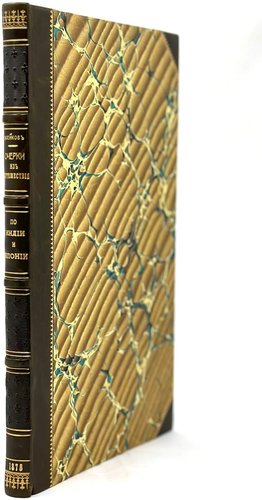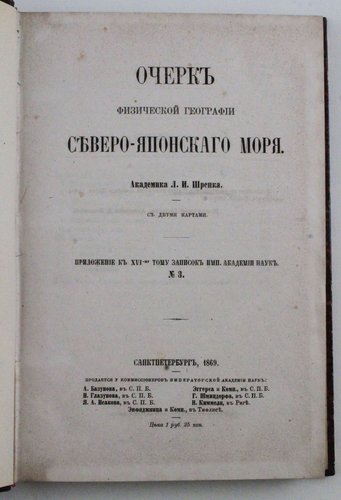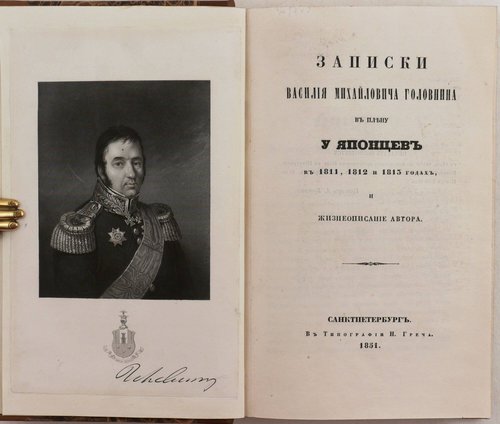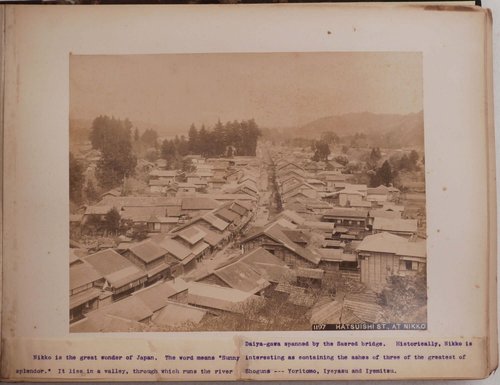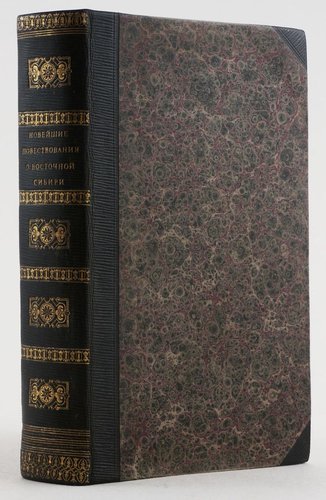




#R61
1813
Copper engraving, ca. 37,5x53,5 cm (14 ¾ x 21 in) on the leaf of laid paper ca. 43x60 cm (17 x 23 ½ in). Engraved title in Russian and German, names of the artist and engraver under the image; plate number in the right upper corner. A couple of very minor tears on the blank margins not affecting the image, otherwise a very good strong impression with wide margins.
Plate LIV from the famous Russian edition of the Atlas of Krusenstern’s circumnavigation in 1803-1806 (Atlas k Puteshestviiu Kapitana Krusensterna… SPb, 1813). The Atlas and three volumes of text published in Russian in 1809-1812 is the first publication of the account of the first Russian circumnavigation accomplished in 1803-1806 on the Russian ships “Nadezhda” and “Neva” under command of Adam von Krusenstern and Yury Lisyansky. The book became an important piece of European literature of exploration and discoveries and within ten years was translated into German, English, French, Italian, Dutch, Swedish and Danish. The price for the Russian edition at the book market right after the publication was 150 rubles (with atlas) and 25 rubles (text only) (Russian State Archive of the Navy, f. 14, op. 1, d. 210, l. 87a). The complete Atlas (containing engraved title page + 112 maps and plates) is a great rarity and a famous desideratum for state and private collections around the world, “one of the best – if one may say magnificent – examples of Russian printing and engraving of the nineteenth century” (Lada-Mocarski, 61 and 62).
The engraving depicts the boat of the local feudal lord which transported the expedition member and the first Russian ambassador to Japan Nikolay Rezanov (1764-1807) from “Nadezhda” to the specially prepared house in Nagasaki. Rezanov stayed there in September 1804 – March 1805 during the negotiations aimed to establish diplomatic relations with Japan. The mission turned out to be unsuccessful, and “Nadezhda” returned to Petropavlovsk. In his account, Krusenstern wrote that the owner of the boat was “Prince of Fisen” (lord Nabeshima, the daimyo of Hizen Province, who was in charge of the defense of Nagasaki during “Nadezhda’s” stay there). The caption to the plate says it was “Prince Tschingodzin” (daimyo of the neighbouring Chikuzen Province who was present at the negotiations with Rezanov and, like Nabeshima, was responsible for the defense of Nagasaki). Note that the engraving shows four Russian guards, Russian Imperial eagle and the ensign of Nabeshima of Hizen on the back of the Japanese boat. The engraving was made after the original drawing by Wilhelm Gottlieb Tilesius von Tilenau (1769-1857), German naturalist and artist who participated in Krusenstern’s expedition. The engraver, Ivan Chesky (1782-1848) was a member of the Russian Academy of Arts (1807), known for his masterly engraved architectural landscapes, portraits and book illustrations, including engravings for Alexander Pushkin’s “Eugene Onegin”.
From the first English edition of Krusenstern’s account: “On the 17th of December the ambassador was conveyed on shore, for which purpose the Prince of Fisen sent his boat, a vessel exceeding in size (being 120 feet long) and magnificence everything I had hitherto seen. The walls and ceilings of the numerous cabins were all varnished over in the most handsome manner; and the stairs, which were of redwood, were polished so highly as to have the appearance of lacker. The decks were covered with mats and the most costly carpets; the curtains to the doors were of rich stuff, and the whole boat was hung up with double rows of silks of different colours. As the ambassador stepped on board, the Russian imperial standard was hoisted and waved together with the flag of the Prince of Fisen; and his guards, which accompanied him on board the vessel, took their place on the upper deck close to the standard. The imperial fortresses were ornamented with new flags and curtains, and manned by a number of Japanese troops in their best clothes: an innumerable fleet of boats surrounding the vessel and accompanying the ambassador to the city.” (Krusenstern, Captain A.J. Von. Voyage Round the World in the Years 1803, 1804, 1805 & 1806. London, 1813. Vol. 1, pp. 272-273).





